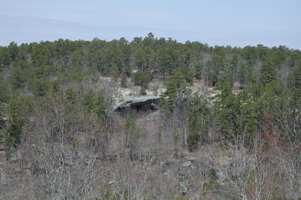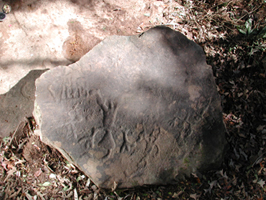Rock Art in Context:
The Physical Context of Rock Art By Jerry E. Hilliard Indians did not create rock art haphazardly. It is clear from archeological survey that some sites were chosen while very similar locations were ignored. So how did Indians decide where to make their pictographs or petroglyphs? Often cultural factors influenced the choice, for example, the presence or absence of previous rock art. Another cultural factor is whether and how the site was used for other purposes. We wouldn't be too surprised to find that different kinds of rock art motifs were selected to decorate a habitation site as opposed to a site that had a special purpose such as for burial or food storage. This article briefly outlines the physical and environmental properties that Indians noticed when choosing places to decorate with rock art.
Specific associations of these features provide clues to site use and rock art function. Rock art placed on highly visible surfaces along trails may represent route or boundary markers. Rock art in small, out-of-the-way sites that are hard to reach and difficult to see may represent places for private rituals, such as vision quests. We often find multiple series of rock art images at sites with unique, highly visible features. This rock art is likely the product of ancient communal ceremonies. |
| Home | Quick Facts | Interpretations | Articles | Technical Papers | Resources | Database | Just For Kids | Picture Gallery | Buy the Book! |
|
Last Updated: April 20, 2007 at 10:30:49 AM Central Time
|


